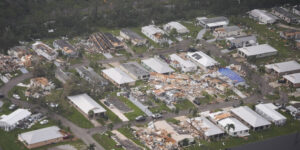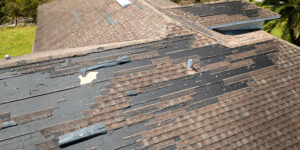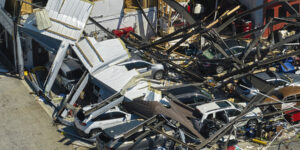The state attorney general’s latest report on the deadly 2023 Lahaina wildfire flagged various locked gates that blocked people trying to flee as flaws in Maui’s evacuation planning.
Yet a padlocked gate where the largest cluster of Lahaina wildfire fatalities occurred was not included in the analysis, which therefore did not seek to determine whether lives could have been saved if it had been opened either by emergency responders – or anyone with a key.
That’s because the gate on Kuhua Street “was not mentioned” to investigators with the Fire Safety Research Institute, according to attorney general spokesperson Toni Schwartz. The nonprofit group is conducting a three-part investigation for the AG into what did and didn’t occur during the wildfire.
Some of the most harrowing 911 calls during the wildfire, which killed at least 102 people, came from callers trapped in vehicles near that gate on Kuhua and nearby streets, with no way to get out.
After Civil Beat reached out last month to ask about the gate – and shared photos taken by a staff photographer in March – the AG’s office asked for the data embedded in those digital images, which includes their GPS coordinates and when they were taken.
Now, as the institute’s investigators move into the third phase of their evaluation for the state, Schwartz said they are using the photos to determine whether there’s anything more to learn about what happened there.
Locked gates impeded escape in several parts of Lahaina on the day of the fire. In Kelawea Mauka, a neighborhood just north of Kuhua Street, local residents worked with a Maui police officer to break down a locked Department of Water Supply gate and create their own path to safety via Lahaina Bypass.
Other residents who tried to flee town north along Old Cane Haul Road, also known as Oil Road, got stuck at a locked gate where the road runs above Lahaina Civic Center. Many cars turned back toward town before a Lahaina resident who had a key to the gate as part of his job managing a zip line course arrived to open it.
The gate along Kuhua, meanwhile, was part of a metal fence that separated a dense residential neighborhood from the industrial property that used to be home to the Pioneer Sugar Mill. Before the fire, the gate had a sign that read “fire access, don’t block,” according to local residents there.
On the day of the disaster, as fire consumed the neighborhoods, some residents tried in vain to ram through the gate and fence to escape makai – seaward – toward Honoapiilani Highway, according to Kirk Boes, a former Kuhua Street resident. Boes escaped the wildfire with his wife before their house was destroyed.
Nearly three dozen people died in the surrounding area, including six who fled to a large industrial corrugated steel Quonset hut immediately next to the gate.
The latest attorney general’s report extensively covers the obstacles faced by evacuees trying to get out via Old Cane Haul Road and through Kelawea Mauka. It features a map showing nine blocked gates that impacted evacuations during the fire. The map does not include the gate separating Kuhua from the industrial area.
“It is weird, if their investigation is really thorough, that they missed it,” Boes said Monday. “I know these investigators do the best they can, but they can miss things.”
Schwartz said in an email Friday that the research institute aims to work with community members and other interested partners to develop plans that address what happened in Lahaina last year and try to prevent another devastating fire from occurring there.
Victims Next To A Locked Gate
The Kuhua gate is on the north side of several businesses housed in Quonset huts halfway down the street. Even though a sign warned people not to block the gate, Boes said cars were often parked there. It’s not clear whether any cars were blocking the gate during the fire.
As the fire consumed the Kuhua Camp neighborhood, scores of residents tried to flee toward the only available way out by car or truck: Lahainaluna Road. Many were blocked by fallen trees and a downed utility pole, according to the latest attorney general’s report.
The report also provided new details about how many of the fire’s victims perished.
Eugene and Maria Recolizado along with their 11-year-old son, Justin, left their car in the Kuhua Camp neighborhood, fled on foot, and sought shelter in one of the Quonset huts, the report stated.
The lightweight structure did not withstand the fire; their bodies were later recovered there along with three other victims.
While the recent report did not reference the fire gate next to those huts, it did discuss several blocked, gated roads that impeded the overall evacuation effort in Lahaina. Fire and police crews had to either use heavy-duty tools to cut through those locks and chains, it said, or track down people who had the keys to open those gates.
The report recommends that Maui’s emergency management officials create a system that gives all the island’s emergency responders access to open those gates at any time.
During a recent meeting at Lahainaluna Intermediate School, Boes said county planners briefed the public on plans to rebuild the street grid in the Kuhua Camp neighborhood. Those plans include making Kuhua a through street at its northern end, Boes said, where it currently dead ends.
Plans also call for extending Aki Street, which intersects with Kuhua, so that it cuts across the industrial property and joins with Papalaua Street on the other side, he added. Boes said that planners told the audience that based on their models “that would have provided safe access for everybody.”
Maui County officials did not respond to a request for comment on Monday.
(Civil Beat Projects Editor Jessica Terrell contributed to this story.)




















 Personal Auto Insurance Could Be Obsolete in 20 Years: Morningstar
Personal Auto Insurance Could Be Obsolete in 20 Years: Morningstar  Milton Threatens to Upend Shaky Florida Homeowners Insurance Market
Milton Threatens to Upend Shaky Florida Homeowners Insurance Market  Progressive Retaining Helene, Milton Property Losses Net; Auto Over $0.7B
Progressive Retaining Helene, Milton Property Losses Net; Auto Over $0.7B  Florida Issues Last Minute Emergency Rule to Deter Unfair Practices by Insurers
Florida Issues Last Minute Emergency Rule to Deter Unfair Practices by Insurers 